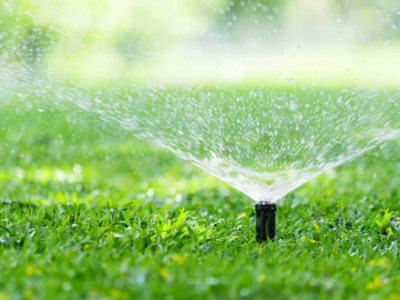According to lawn-leader Scotts,
, Grass seed can be kept for two to three years if properly stored. Even in ideal conditions, however, the germination rate continues to drop after storage.
Does grass seed go bad? Often, this question bugs everyone involved with planting and gardening. Following this, the simplest answer we could find for this question would be that If held in a suitable setting, grass seed has been known to last for decades.
Your seed should be fine if it has been stored in a cool, dry, dark place in a breathable container (ideally a paper bag).
Let us check out the details about the lifespan of grass seed and what all we need to know regarding the same.
The Grass Seed’s Lifespan
When properly stored,
Bagged grass seed will last for one year after the expiration date on the label. The germination rate of the seeds was measured on this date.
Depending on the grass variety, this rate should range from 80 to 95 percent. Unless the seed is stored incorrectly, the rate should be accurate for at least the first year after the test date.
After the first year, each additional year of storage decreases the germination rate by 10% to 20%.
How to Store Grass Seed Correctly?
Temperature conditions under which the grass seeds should be stored must be cool and dry with plenty of air circulation and a temperature of 40 to 50 degrees Fahrenheit.
The seed should not be held in an unheated barn, garage, or any other location where the temperature would fall below 32 degrees Fahrenheit.
Bags of grass seed should be held off the floor and out of reach of rodents. If the basement or cellar is dry, it can be used as a storage space.
If an open box of baking soda or a commercial desiccant is put in the refrigerator to eliminate moisture, the seed may also be kept there.
Germination Testing of Grass Seed
While old grass seed does not germinate as well as new grass seed, it can still be used if the number of seed sown is increased proportionally.
Follow these steps for testing the germination of grass seeds:
- Start with spreading a damp paper towel on a flat surface to test the germination.
- Roll up the towel after arranging ten seeds in a row.
- Place the rolled paper towel in a zip-top plastic bag and store it in a warm location for one week.
- After that, take the wrapped towel out of the plastic container.
- Count the number of seeds that have sprouted.
- The seeds have an 80% germination rate if eight of them sprouted. If only five or fewer seeds sprouted, the germination rate is only 50% or lower; in this case, fresh grass seed should be considered.
How to Plant Grass Seed?
Grass seeds must have enough seed-to-soil contact to sprout, which means that a planting depth of no more than 1/4 inch is needed. In addition, the soil must have a high moisture content for soil moisture to reach the seeds. The best time to sow the grass seeds is believed to be either spring or fall.
Set the rate of your spreader to 12 to 16 seeds per square inch. Lightly rake the seeds into the soil. To sprout, grass seeds need just the right amount of moisture.
Once the seeds have sprouted, keep the top 1 or 2 inches of soil moist but not soggy. Shake a few handfuls of straw over the seeded area to keep the seeds cool before they sprout.
Conclusion
Well, that makes everything you need to be aware of for knowing about the total lifespan of grass seed. I hope this helps to solve each of your queries about the grass seed imperishability. Happy Planting!










Comments